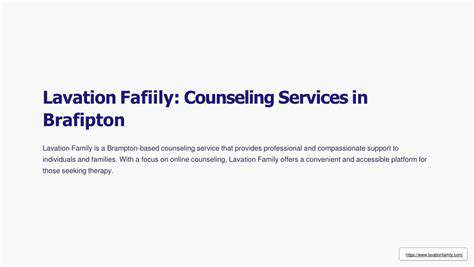
Challenging Negative Thoughts and Beliefs: Reclaiming Control
Identifying Negative Thought Patterns
Negative thought patterns, often ingrained over time, can significantly impact our emotional well-being. Recognizing these patterns is the first step towards challenging and modifying them. These patterns can manifest in various ways, from catastrophizing about potential negative outcomes to dwelling on past failures. Identifying specific triggers and thought processes can help us understand how these patterns develop and contribute to our emotional struggles.
Becoming aware of these patterns requires self-reflection and introspection. Journaling, mindfulness practices, and seeking support from a therapist or counselor can provide valuable tools for recognizing and documenting these recurring negative thought patterns. This awareness is crucial for taking control of our emotional responses and making positive changes.
Understanding the Root Causes
Negative thoughts and beliefs often stem from past experiences, learned behaviors, or underlying anxieties. Understanding the root causes of these thoughts can provide a deeper understanding of their origins and contribute to more effective strategies for managing them. Sometimes, these roots are deeply embedded, and uncovering them might require extensive self-exploration and potentially professional guidance.
Examining childhood experiences, significant life events, and any existing mental health conditions can be valuable in understanding the origins of these negative thought patterns and beliefs. This knowledge can help us develop targeted strategies for challenging and changing these patterns.
Challenging the Validity of Negative Beliefs
Once you've identified negative thought patterns and understood their potential roots, the next step is to challenge their validity. Are these beliefs based on facts, or are they distorted perceptions? Often, negative thoughts are not grounded in reality but are instead exaggerations, generalizations, or interpretations that aren't entirely accurate. This process requires critical thinking and a willingness to question the assumptions underlying these beliefs.
For example, if you believe you're a complete failure because of a single setback, challenge this belief by examining the broader picture and considering alternative explanations. Ask yourself if this single event truly defines your worth and capabilities. This questioning process helps to reframe negative beliefs into a more balanced perspective.
Developing Alternative Thought Processes
Replacing negative thoughts with positive, realistic, and helpful ones is crucial. This involves consciously choosing to think differently about situations, focusing on the present moment, and recognizing that negative thoughts are often temporary and not reflective of your true self. Developing alternative thought processes requires practice and consistency.
This could involve reframing negative statements into more positive ones, focusing on your strengths and accomplishments, and practicing gratitude for the positive aspects of your life. Through consistent effort, you can cultivate more balanced and optimistic thought patterns.
Implementing Cognitive Behavioral Techniques
Cognitive Behavioral Therapy (CBT) provides a structured approach to challenging negative thoughts and beliefs. CBT techniques focus on identifying negative thought patterns, evaluating their validity, and replacing them with more realistic and helpful ones. These techniques can be implemented through self-guided exercises, therapy sessions, or a combination of both.
Seeking Support and Maintaining Progress
Overcoming negative thoughts and beliefs is a journey that often requires support and encouragement. Talking to a trusted friend, family member, therapist, or support group can provide valuable perspectives and accountability. Maintaining progress in challenging negative thoughts requires consistency and a willingness to adapt strategies as needed. It's important to recognize that setbacks are normal and to remain committed to the process even when challenges arise.
Celebrate small victories and acknowledge your progress. Remember that changing ingrained thought patterns takes time and effort, but with consistent effort, you can reclaim control of your thoughts and emotions, leading to a more fulfilling and positive life.
Creating a Supportive Environment: Building a Network for Success
Understanding the Importance of Support
Creating a supportive environment is crucial for navigating the complexities of emotional well-being. A strong support network provides a safety net during challenging times, offering encouragement, empathy, and practical assistance. Recognizing the value of this network is the first step towards building a foundation for emotional resilience and overall success. This support can come from various sources, including family, friends, mentors, and even professional counselors.
Identifying Your Support Needs
Understanding your unique emotional needs is paramount to building an effective support system. Consider what types of support you find most helpful – whether it's listening ears, practical advice, or simply a shoulder to cry on. Self-awareness in this area allows you to identify the specific qualities and characteristics you seek in your support network. This proactive approach ensures that the support you receive aligns with your individual needs and preferences.
Building a Support System
Actively cultivating relationships with individuals who can offer emotional support is key. This involves nurturing existing relationships and actively seeking out new connections. Engaging in activities that bring you together with like-minded individuals, joining clubs or groups with shared interests, and attending community events are all effective ways to expand your support network. Remember, building a support system is an ongoing process that requires consistent effort and nurturing.
Seeking Professional Guidance
Sometimes, navigating emotional challenges can feel overwhelming. Seeking guidance from a mental health professional can provide invaluable support and tools for coping. Therapists and counselors offer a safe space to explore complex emotions, develop coping mechanisms, and gain a deeper understanding of your personal experiences. They can also help connect you with resources and strategies to foster a supportive environment in your life.
Leveraging Technology for Support
In today's digital age, technology offers numerous avenues for finding support. Online communities, support groups, and mental health apps provide opportunities to connect with others facing similar challenges. These platforms can offer a sense of belonging, shared experiences, and access to valuable resources. Remember to be mindful of online interactions and prioritize credible sources of information.
Maintaining and Nurturing Your Support Network
Building a supportive environment is not a one-time effort; it's an ongoing process that requires consistent maintenance and nurturing. Regular communication, active listening, and expressing gratitude are essential elements in sustaining strong relationships. Making time for the people who support you, celebrating successes, and offering support in return are important steps in maintaining a robust and reliable support system. This ongoing effort is key to long-term emotional well-being.
